Growing greens on the windowsill in winter for beginners is a very real task. It is only necessary to create suitable conditions for it and choose those species that will feel good in closed ground. A mini-garden on the windowsill today is not only a practical, but also a fashionable solution as part of the current eco-trend and the promotion of a healthy lifestyle. Of course, it is very convenient to always have fresh parsley on hand, but at the same time, such a garden not only provides the family with fresh herbs and vitamins, but also becomes a decoration of the kitchen.
What greens can be grown at home?
Greenery on the windowsill all year round is not the most difficult task. Of course, each gardener decides for himself which crops will make up this garden on the window. But you need to take into account the peculiarities of growing this or that greenery at home. The purpose of their breeding is to obtain a high yield, and you need to choose those varieties that ripen quickly.
In most cases, greens at home are grown from seeds. But, of course, it all depends on the culture itself. So, green onions are grown from bulbs. This is generally one of the most common garden crops from those that grow on window sills. On the one hand, it is very easy to grow, on the other hand, it is a storehouse of vitamins. Many housewives are afraid to grow it because of the unpleasant smell, but it only occurs when the bulbs are kept in water for too long. And if it is grown in the ground, then there will be no smell.
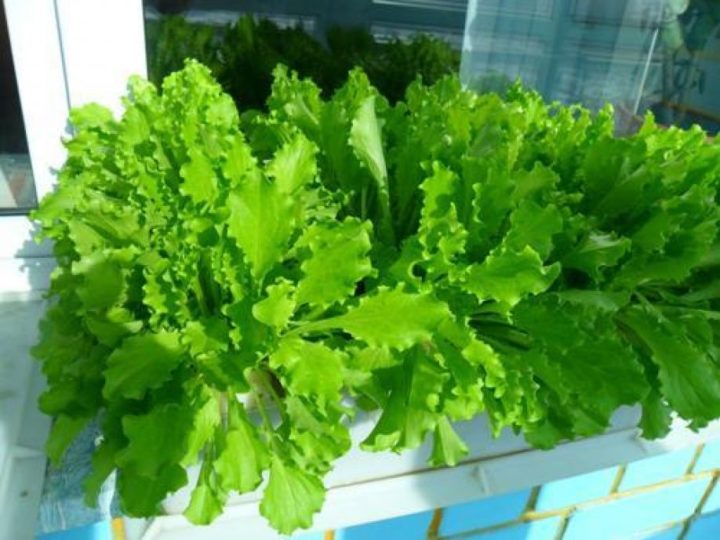
Home window garden often involves spinach. This is one of the most common types of greens as it germinates quickly and looks beautiful in a pot or neat box.
Dill can also be grown on the windowsill, but only some of its varieties, since it still ripens quite late, even in the best case, its first sprouts will appear only a month after sowing.
And, of course, the window garden includes parsley. Unlike other types of greens, it is grown from root crops, in which a whole upper kidney must be preserved. Dill is grown in fairly tall pots or boxes. But most types of lettuce do not require this. In addition, it is recommended to use peat tablets or cassettes for them. Experts advise buying several types of lettuce, with leaves of different shapes and colors. Firstly, the plants will look more decorative, and secondly, the greenery on the windowsill will be all year round, since different types differ in terms of ripening. The most unpretentious species is considered watercress. It does not grow so luxuriantly, but because of the characteristic shape of its small leaves, the pot of greens seems curly.
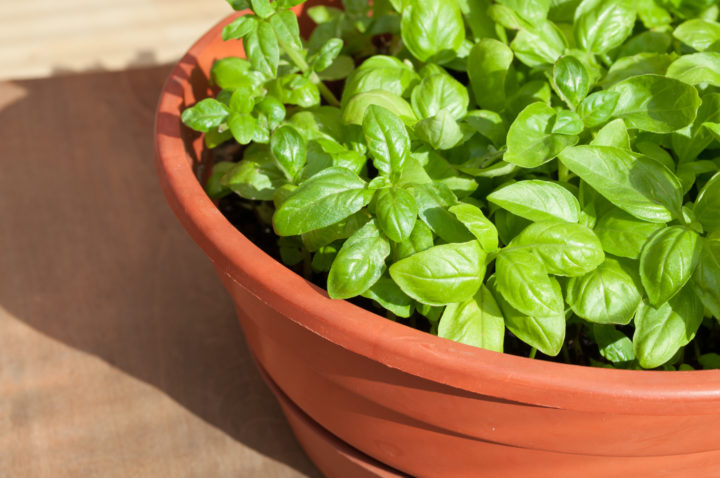
Theoretically, a window garden could include more crops. But not all of them will grow in winter lighting conditions. And for some, for normal development, it is necessary that there is a stable positive temperature outside the window. This applies to crops such as arugula. basil, watercress, marjoram and thyme. In order for the seeds of these crops to germinate faster, they arrange something like a mini-greenhouse for them, covering the pots with a film, under which the temperature and humidity will be comfortable for these species.
General rules for growing greens
A garden on the window is not difficult at all, the main thing is to follow the general recommendations. You can grow greens in ordinary flower pots, and in wooden boxes, which should not only be comfortable, but also beautiful. In addition, the drawers must be made in such a way that water does not pass through. It is very important to choose the right parameters of the pots. The optimal length of the container for most types of greenery is 40-50 cm. The width should be 20-25 cm, and the height should be 12-15 cm. A drainage hole must be made for the day. In such a pot or container, a drainage layer is required. To do this, use expanded clay, broken bricks or even just large clean sand.
It is not enough to know how to grow greenery at home, you still need to be able to choose the best place for it. As a rule, greenery prefers warmth and sunlight, so it is better to grow it on a south or southwest window.
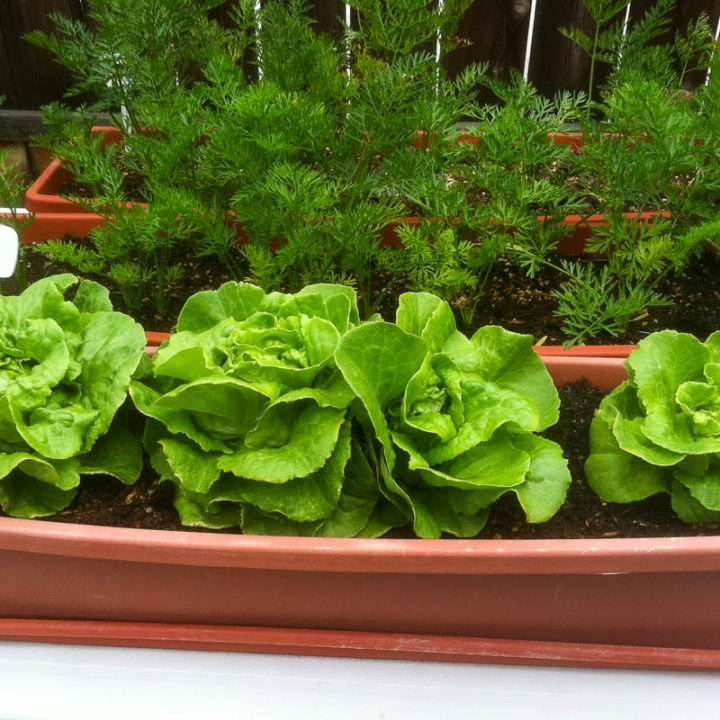
Before planting, it is imperative to pour hot water over the soil prepared for forcing, then crush it and make grooves in it: then seeds are poured into them, and a layer of earth about a centimeter thick is added on top.
Greens are usually watered every other day, usually in two doses and in small portions. It is recommended to warm up some seeds before planting and first germinate in damp gauze. But this mostly applies to crops like asparagus.
Growing greenery at home means creating the most comfortable conditions for it. So, most of these crops are harmed by dry heat from radiators. In order not to harm the plants, the battery can be covered with a special shield and a humidifier can be used. This is also useful for creating a comfortable microclimate in the crowbar. If it is not possible to buy such a device separately, you can make an impromptu humidifier by simply placing a piece of wet cloth on the battery.
In winter, greenery is not enough light. Therefore, many plants grow pale, and there may be less vitamins in them. In such cases, additional illumination using ultraviolet lamps is used. For most crops, the optimal day length is 12-16 hours.
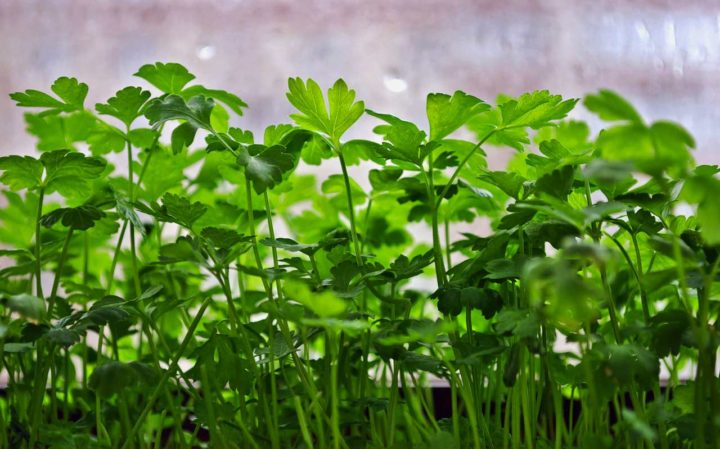
However, pale leaves can mean chlorosis, which often occurs due to problems in the acidity of the water. The fact is that tap water is often more alkaline, and therefore a number of nutrients (phosphorus, manganese, iron, boron) cease to dissolve in the soil, plants do not receive them, and this affects their condition. In this case, you need to take care of the water for irrigation, in extreme cases, special phytomixtures will need to be added to it.
You can safely supplement your diet with home-grown crops. Firstly, in this case it is known for sure that all this was grown without chemistry. Secondly, in the greens, which were plucked and used almost immediately, more vitamins are stored than in the one that has lain in the store for a long time.
How to grow parsley?
As you know, parsley is a real storehouse of vitamins. The composition of this plant includes ascorbic acid and vitamins A and E, which are antioxidants, and B vitamins, and phosphorus, and potassium. Of course, every housewife wants such greens to be always at hand. Growing parsley is not difficult, but you need to remember that its seeds germinate much longer than other green crops, which is due to the high content of essential oils. There are two options for growing it: from a root crop and by accelerating seed germination. When choosing the second option, the seeds must be thoroughly rinsed with water and wrapped in a damp cloth.
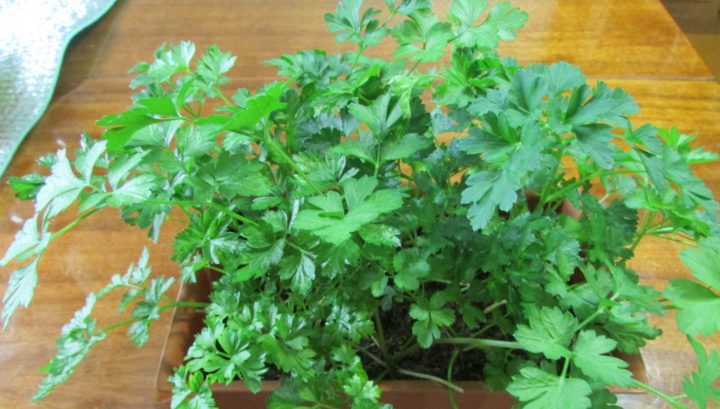
The soil for growing parsley is prepared in advance. You can take ordinary garden soil, but it will need to be additionally treated with a weak solution of potassium permanganate for disinfection. You can purchase ready-made soil for such crops, which is sold at garden centers.
There should not be any difficulties with growing parsley. You just need to take a container a little higher than they usually take for greenery - 20 cm high. A drainage layer is placed at the bottom of the container, then covered with earth. After the soil is ready, you can plant the seeds. To do this, make beds with a distance of 10 cm from each other. The seeds are planted to a depth of no more than 1 cm. The soil is watered before planting, as described above. In the future, until seedlings appear, the earth is watered every other day from a sprayer. After the emergence of seedlings, it is already possible to water from a watering can once every two days.
At a temperature of 20 ° C and normal light, parsley seedlings will appear in 3 weeks.
Growing spinach and onions
Spinach can be grown on a windowsill all year round. This culture has a tap root, which requires compliance with certain rules regarding the selection of pots for it. When caring for plants, it is important not to flood the soil and avoid contact of tender leaves with water when watering.
Spinach is germinated in boxes or containers at least 10 cm high. Good drainage is very important for it. For this, expanded clay is usually used. Spinach seeds are planted not densely, but at a distance of 5-10 cm between rows. Planting depth - 1-2 cm. Under favorable conditions, after 1-1.5 months, greens suitable for consumption will appear. The most delicious is greens obtained from plants with 6-10 true leaves.
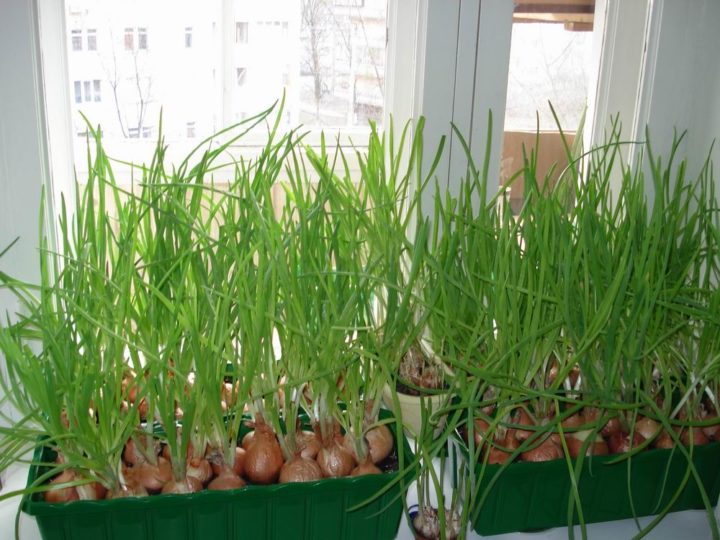
Growing onions
You can choose any onion for planting. The larger the bulbs, the more nutrients they will have and the more greenery will be grown. But you can also plant small shallots. The ideal option is to choose several varieties at once with different dormant periods so that the greens on the table are all year round.
Theoretically, onions can also be grown from seeds. But in this case, it should be clarified whether this or that variety can be grown at home.
Growing lettuce and dill
Salad greens are tasty and healthy. And there should be no problems with its cultivation. However, it must be taken into account that this crop has very small seeds, so later, when shoots appear and the feeding area increases, it will be necessary to pick. For these purposes, use cassettes in which you need to plant seedlings - choose those that already have 1-2 real leaves with a clod of earth, and one in each cell. Over time, the lettuce will grow beautifully.
As for dill, not all varieties are suitable for growing on a windowsill. For mini-gardens, the Grenadier variety with light leaves and a delicate aroma and taste, the unpretentious and disease-resistant Gribovsky variety, the very fragrant Richelieu variety with beautiful blue-green leaves resembling lace, and the Kibray variety are used. containing a huge amount of vitamins.
As with any other herb, you need to prepare the soil for growing dill. Garden soil is disinfected, and this is the most important moment for obtaining a crop in the future. To do this, it is recommended to treat it with a solution of potassium permanganate, and if it is not there, then ignite it in the oven or microwave. Another option is to treat with hot steam, which is guaranteed to eliminate pests.
A drainage layer is placed at the bottom of the container, then the prepared soil is poured. Seeds are pre-soaked in warm water and left in this state for a day, changing the water every 5-6 hours. Then they are dried with a paper towel or cloth and planted in a pot.
Dill is sown in beds, sown with seeds at a shallow depth, covered with a layer of earth about 2 cm thick on top. This crop needs abundant lighting, so it is usually grown under ultraviolet lamps.
It should be remembered that greens have a short growing season. Therefore, it has the ability to quickly accumulate nitrates in large quantities. This makes any top dressing problematic, including with the help of mineral fertilizers. The soil that is sold in garden centers contains enough minerals. But if in doubt, you can feed the greens with natural fertilizers, in this case it is eggshells and tea.














